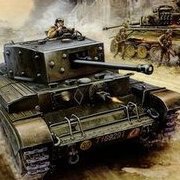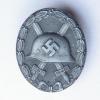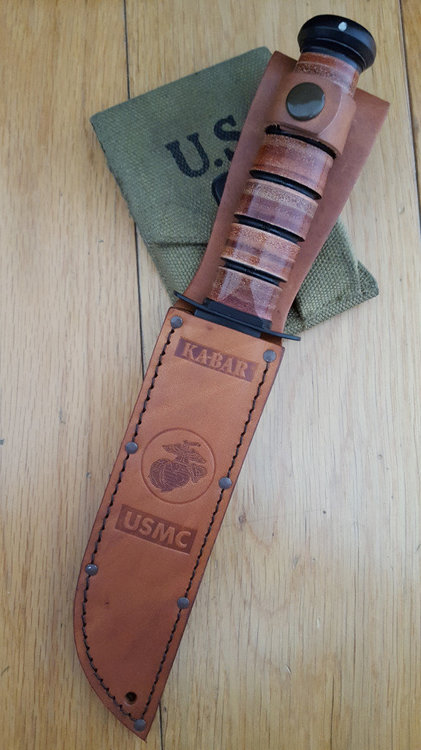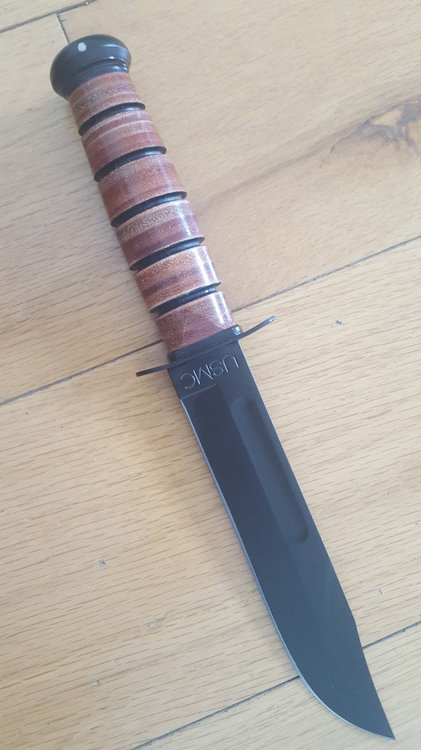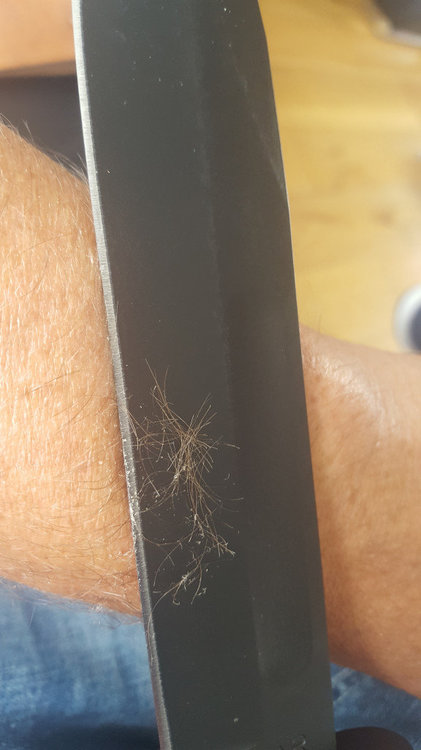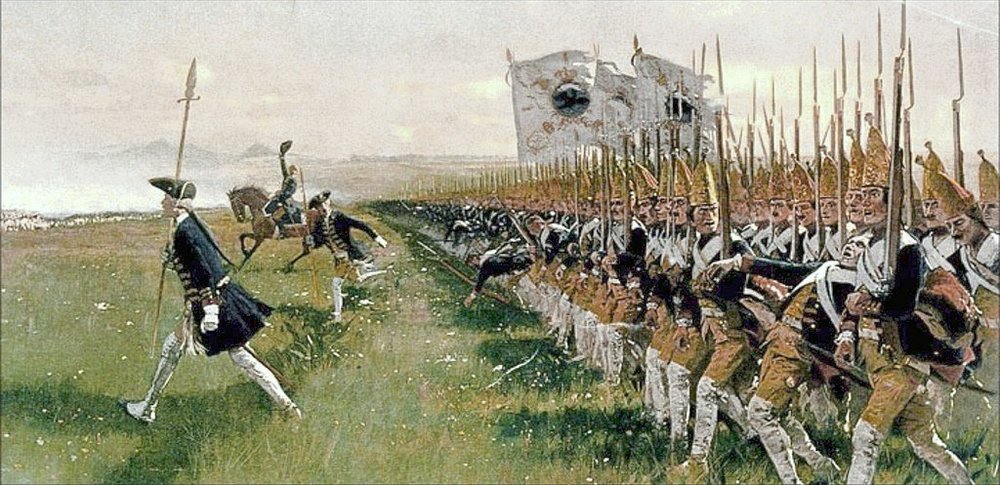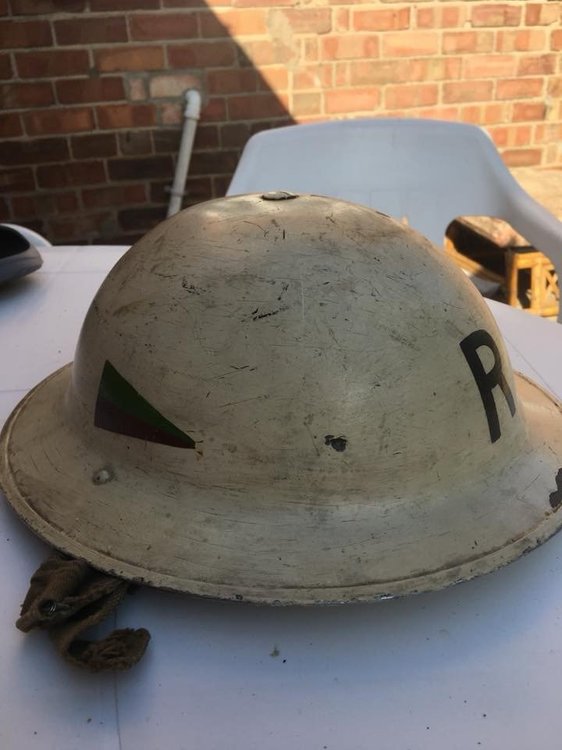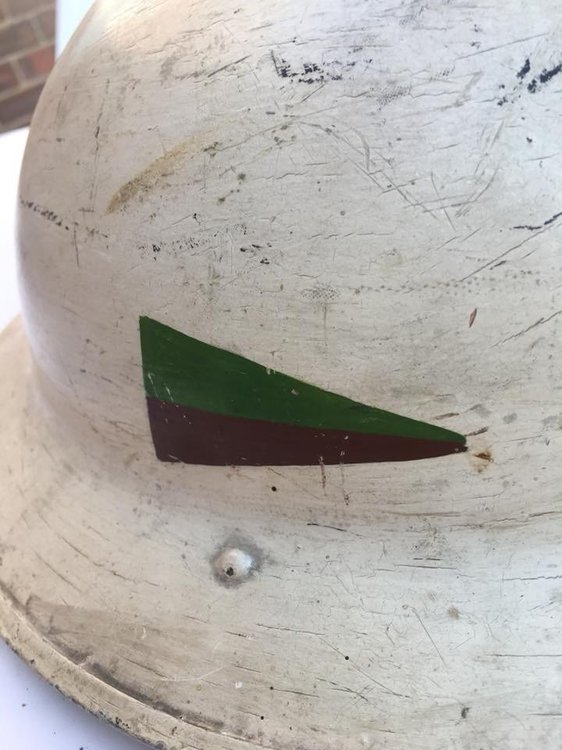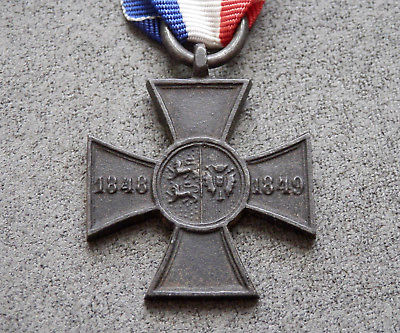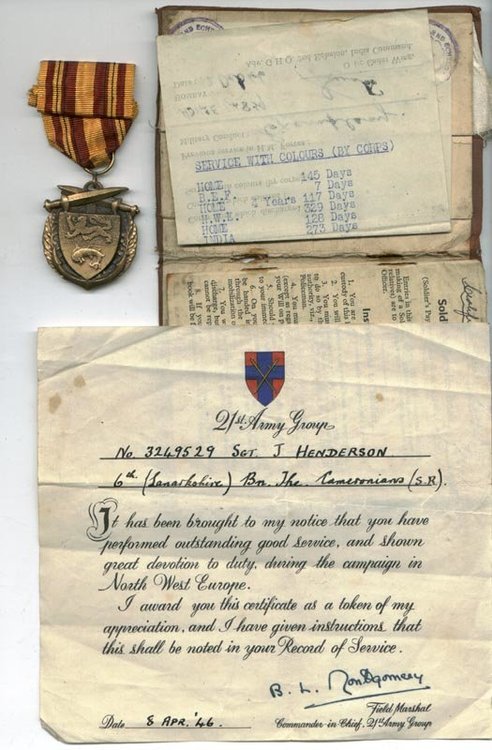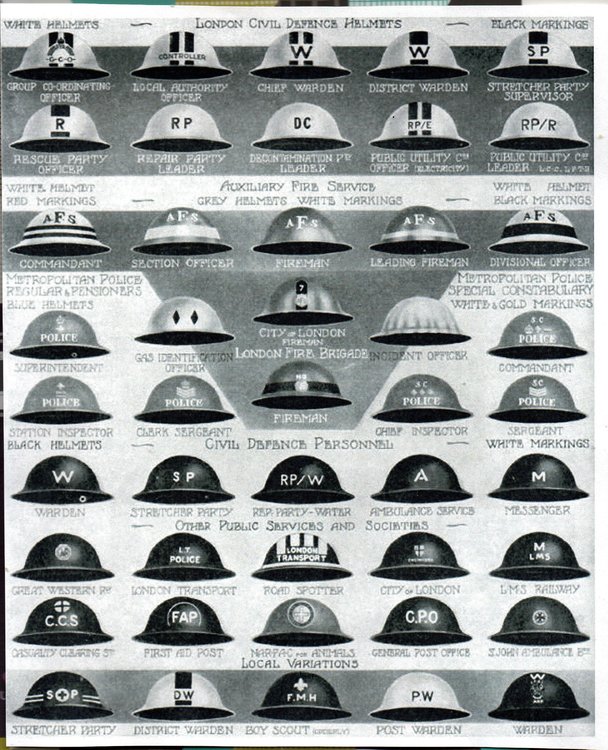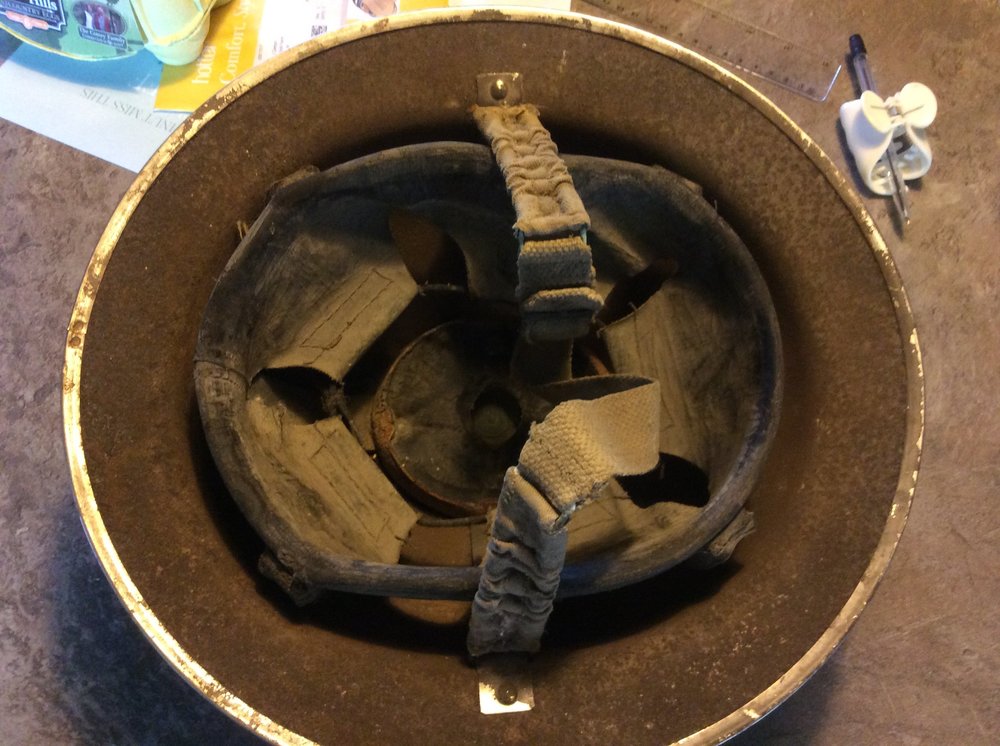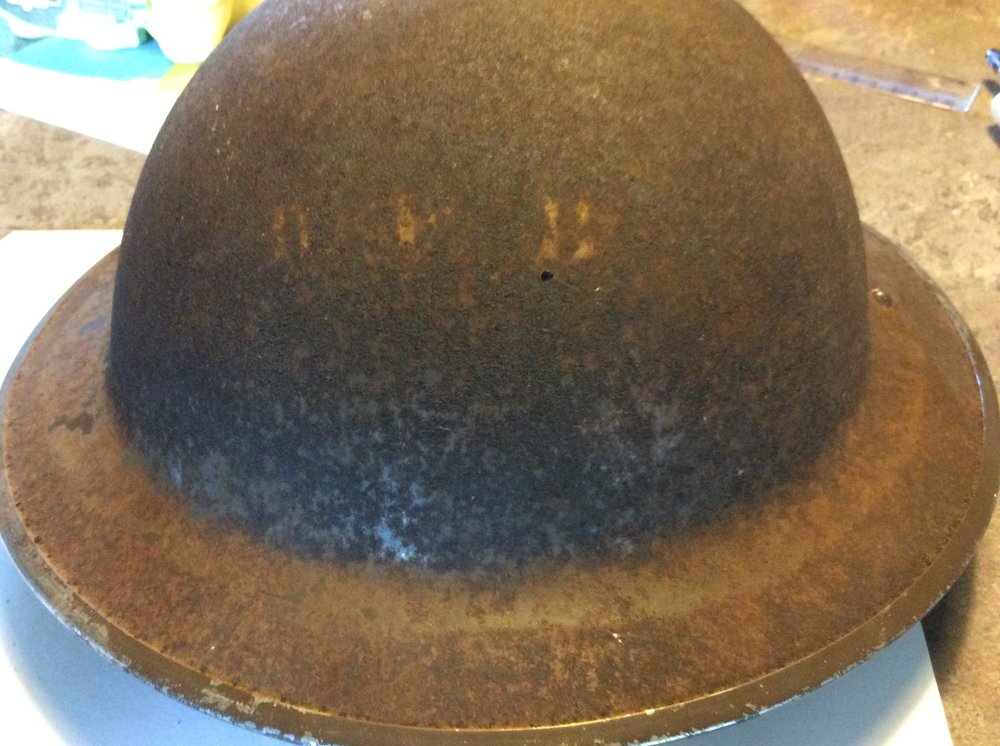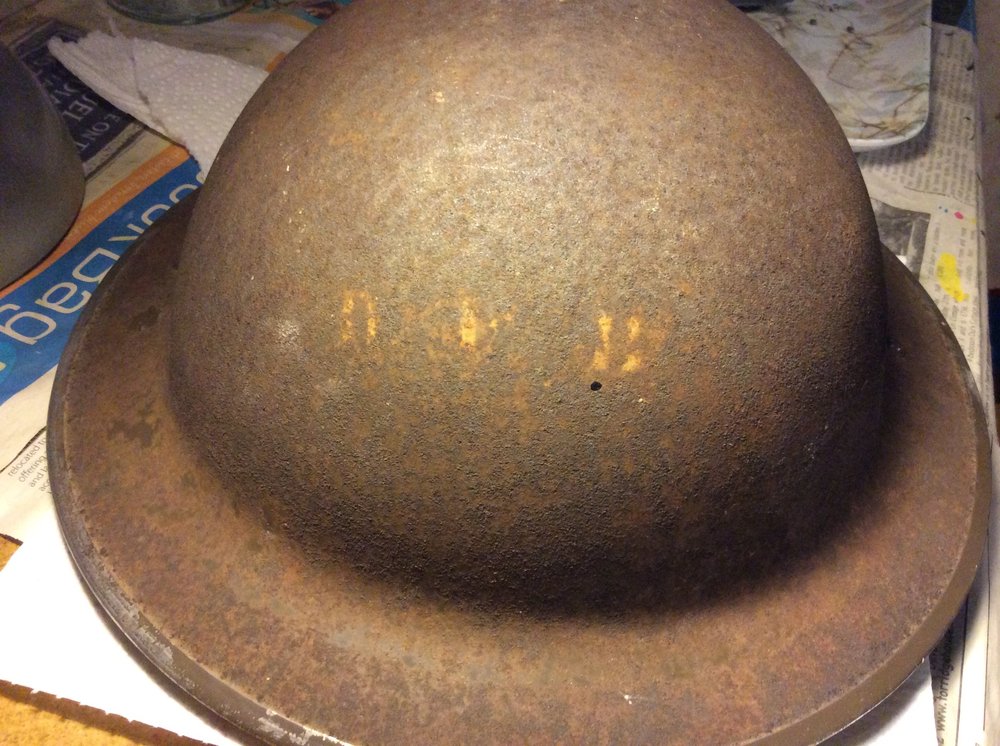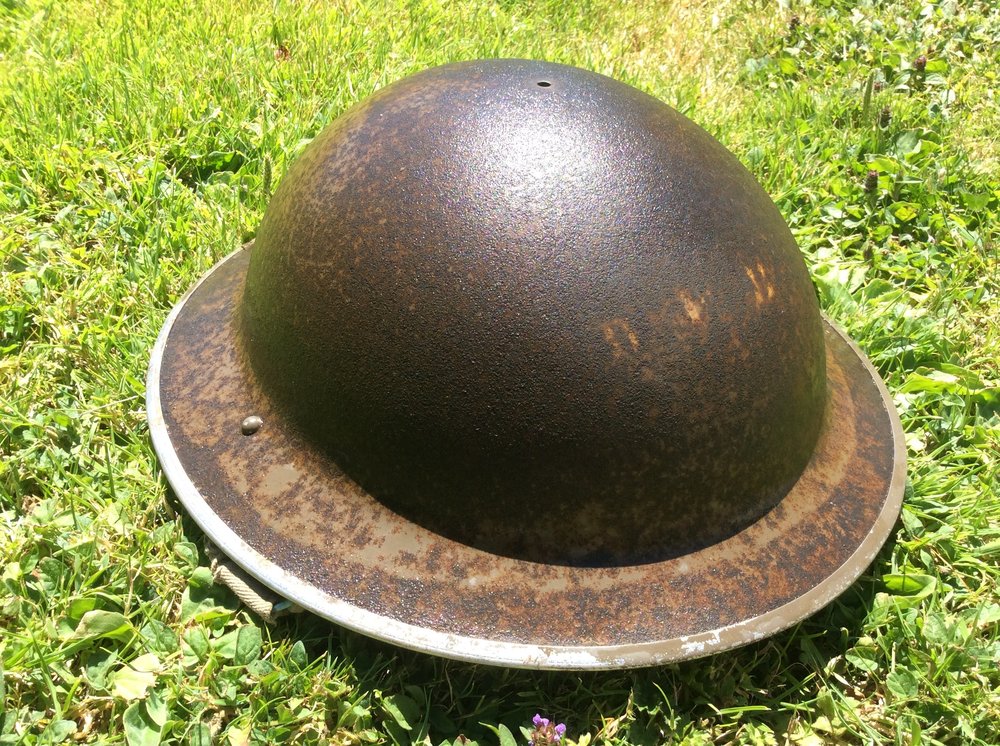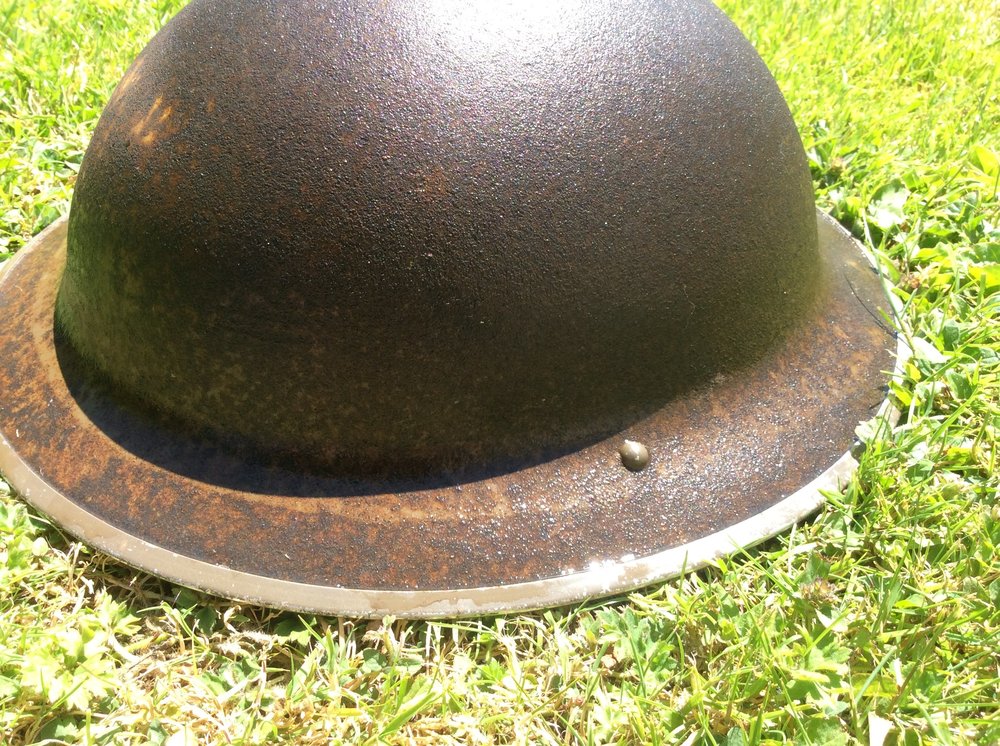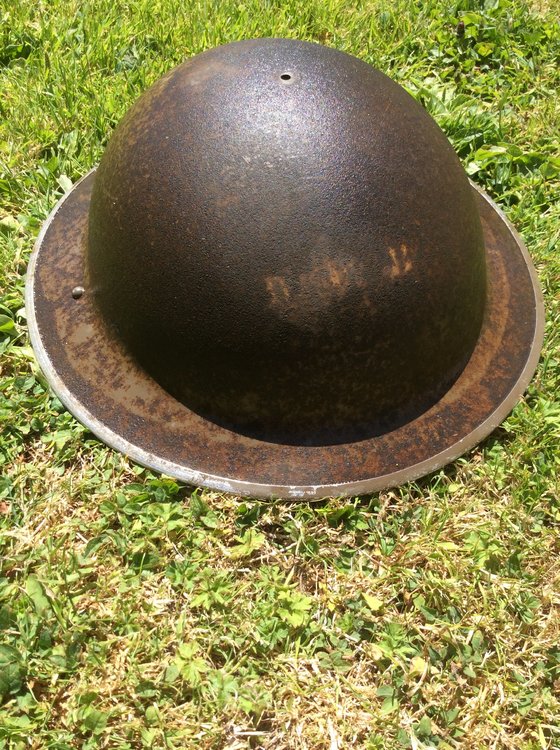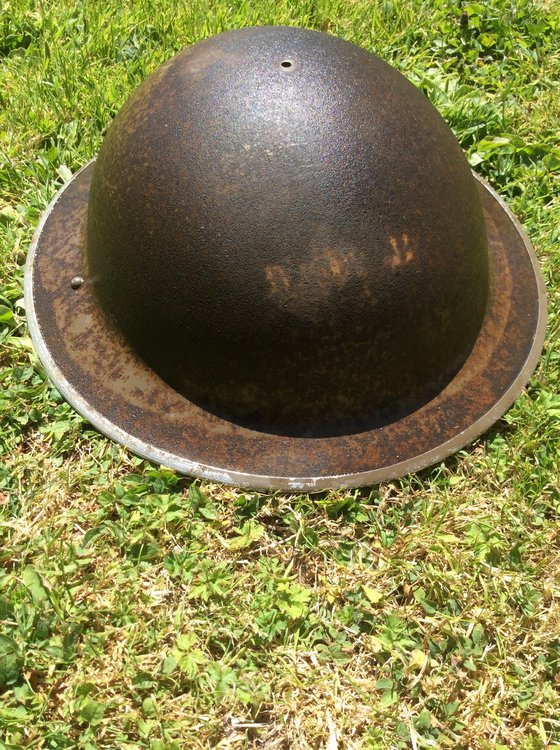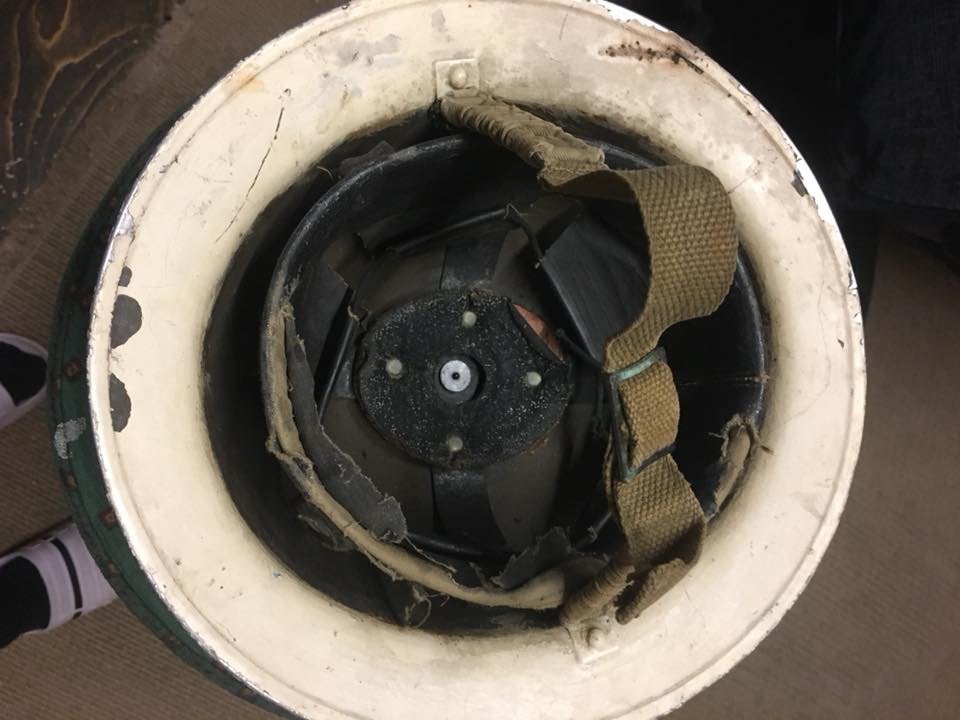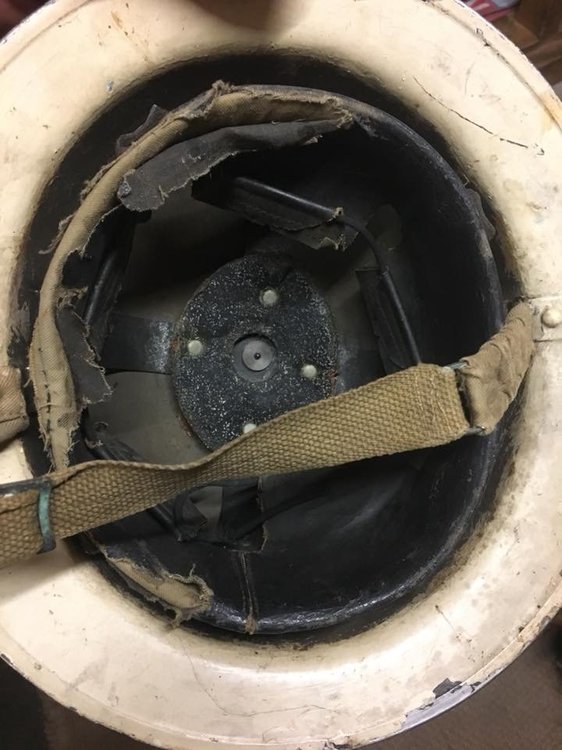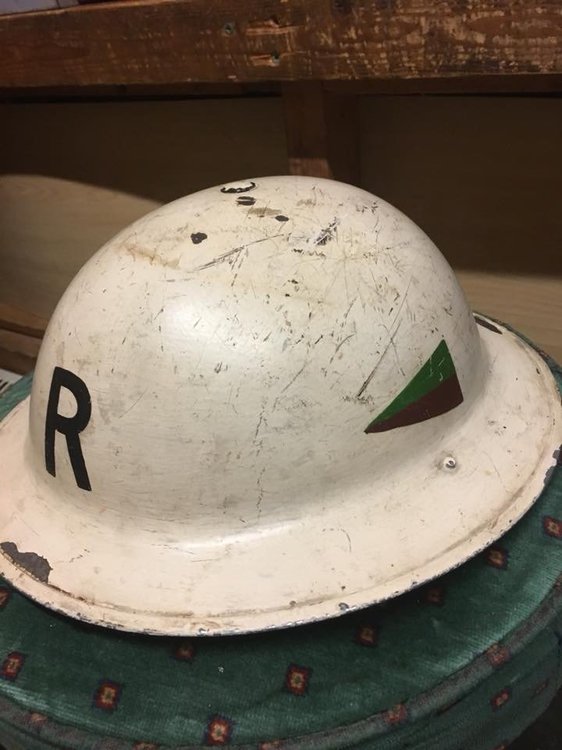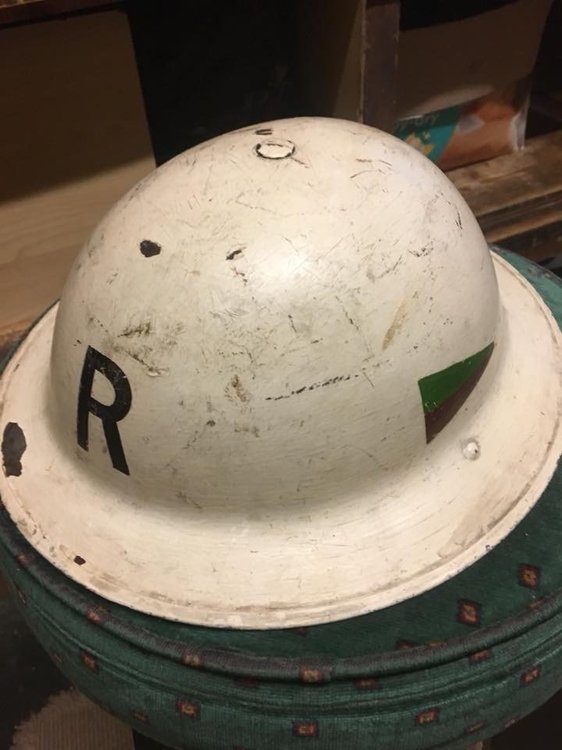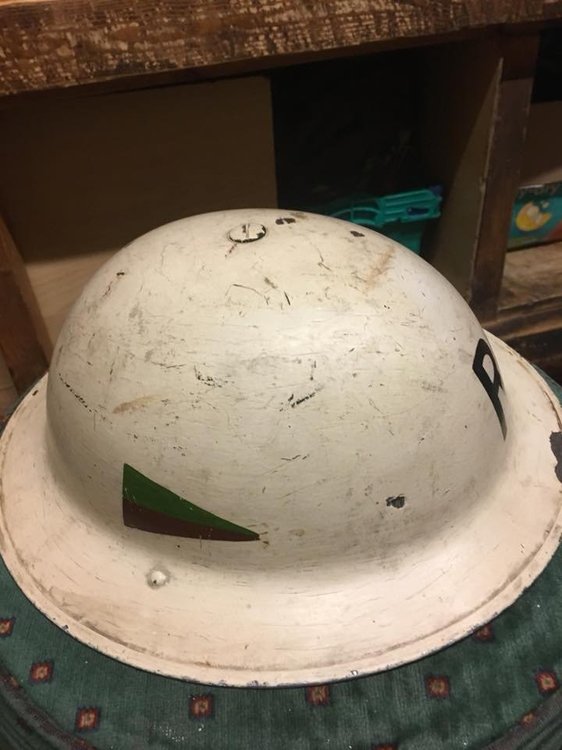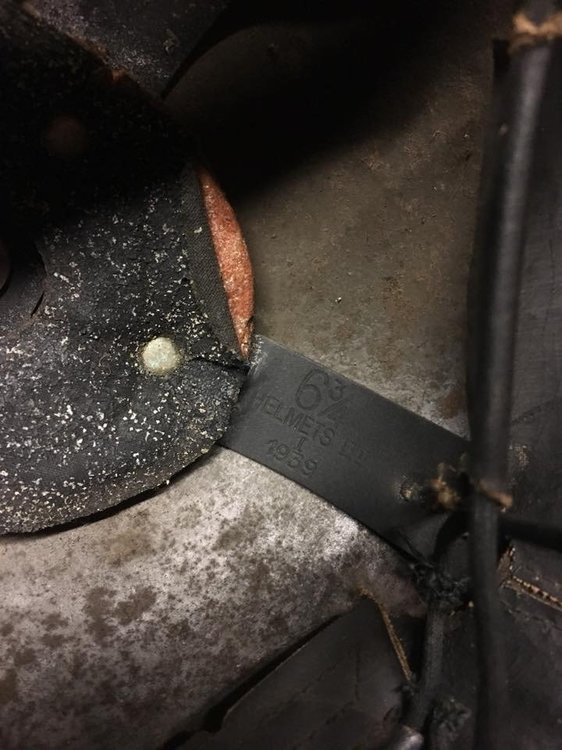Leaderboard
Popular Content
Showing content with the highest reputation on 08/08/18 in all areas
-
I got this a couple of weeks ago, its a KA-BAR USMC combat knife, and I can tell you this bugger is shaving sharp right out of the box ( as can be seen in last pic) . They where first adopted by the United States Marine Corp in November 1942 as the 1219C2 combat knife (later designated the USMC Mark 2 combat knife or Knife, Fighting Utility), and subsequently adopted by the the United States Navy as the U.S. Navy utility knife, Mark 2.2 points
-
Hi Lackie (I hope I have got your name right), From the introduction of the M34, right through to the 1960's, the standard liner band material was compressed fibre although, by the 1960's, plastic was starting to appear. In almost 60 years of collecting I have never seen a German fire helmet, war time or post war, with a leather liner band. That said, in this collecting world of ours, I don't think you can ever be 100% certain that some exception to the norm isn't going to turn up. However, I believe, in this case it is highly unlikely. If you have acquired a fire helmet that has a leather liner band I would suspect the liner is not original to the helmet. However, if I could see photographs I might be able to comment further. I hope this helps. Regards, David.2 points
-
Badge wise - I keep searching old books and the internet to see if there is anything that shows some other sort of AFS 'solid badge' not just painted badging, but so far nothing, never mind anything that's been mounted on a helmet!2 points
-
Hi David Sorry about late reply but as you appear to be the guy to go to concerning civic firemen helmets would you know if war time helmets had leather liner bands or not2 points
-
The original badge for the AFS was a buttonhole version which was 28mm in size which had a crown, then there was the cap badge with no crown which was 39mm to 40mm or 1 and a half inches in size. I've also seen another badge same design as the cap badge but with crown again buttonhole fitting 28mm in size. I've been thinking about the white stripe that is under the green paint, to me this suggests that the helmet has been painted the same colour twice as the white bands of AFS rank were on top of the green paint then over painted in red.2 points
-
Leon - just had another measure (more critical this time) measurement is 1¼ ins and that is taking into account the curvature. Also made sure that the 'Red' NFS paint from the NFS rank banding that's on was applied after the holes were soldered up and 'yes' that is the case - so we can definitely say that the holes were made and filled pre August 1941. I notice that the AFS had 2 types of metal badging of the same design - one with the Kings Crown and one without, which one did you get your post centre measurement of 1 inch from? - just wondered if one was larger than the other?2 points
-
The Battle of Hohenfriedberg, 4. June 1745 A massive victory over the Austrian Army, many cannons and regimental colours were captured. Dragoner-Regiment Kronprinz greatly distinguished itself, it was later known as Kürassier-Regiment 2 This classical painting depicts an attack by the Erstes Bataillon Garde1 point
-
Hi all, This query is on behalf of a friend, ————————————— (Copied from Facebook) Hello can anyone tell me what the green and brown markings are on this 1939 rescue Brodie thanks for any help. ————————————— I was thinking it was a district/area marking for a higher ranking Rescue warden (maybe district head or something due to black R on white coat). He also agrees. Many Thanks, Tom P.S. Liner and helmet marking photos coming soon.1 point
-
Just arrived today - a nice Prussian Infantry Officer's helmet, circa 1914 for the Museum. Condition as seen, liner is very clean, but has some rodent damage to the leather sweatband, which was the reason this was for a good price. The emblem has apparently been replaced at some stage due to possible battle damage, which is slightly noticeable to the leather behind, this emblem also shows a bit of wear, rubbing and some patches of darkening on the raised areas, most of the original gilt still present. Altogether in a very reasonable state, no warping of the rear peaks or skull. This helmet type was worn by following Prussian line regiments: J.R. 13 - 32, 33 (except for 5. and 6. Comp.) 35 - 72 75 - 76, 79 - 86 96, I.Btl. and 97 - 99 128 - 132, 135 - 138, 140 141, 143 - 152 153, III.Btl., 154 - 163 166, 167 and 171 - 1761 point
-
A visitor to the Museum today brought something special for our collections. An original example of the Erinnerungskreuz für die Schleswig-Holsteinische Armee 1848/49 - campaign cross for the Schleswig-Holstein Army, 1848/49. These were awarded on 2. July 1850 by the provisional government, and were made of iron cast from the wreck of the captured Danish ship, "Christian VIII.", which was destroyed on 5. April 1849 by shore batteries of Prussian and Nassau artillery at Eckernförde. A price was agreed on, and the decoration has now been placed in the Museum's collection of that period. Here is an example of that decoration. The short length of worn ribbon is in the colours of Schleswig-Holstein, blue, white and red.1 point
-
Just a general enquiry, How do you tell if a Brodie Mk.1* was used by the British Expeditionary Force. I.E. Was there any special markings? What colour were they (one of he various military greens or even brown?)? Is there a certain manufacturer or date? Many Thanks, Tom1 point
-
1 point
-
Hi Kenny, I asked some people on another forum and they said that: If the helmet has non standard khaki paint, a 1937/1938 dated liner, MKI chinstrap fitting and strap, plus a division flash to a known BEF unit , then it has a chance.1 point
-
1 point
-
1 point
-
Yeah, it’s the first time I’ve ever seen flashes on a Civil Defence aswell. Must be un-official.1 point
-
I believe that there were official , semi-official, and non-official markings on civil defence helmets during WW2. So maybe these flashes are non-official, I've looked at over 60 white and black civil defence helmets with the letter R on them and none have flashes on them1 point
-
1 point
-
Most likely a rescue personnel helmet in the London area, the flashes may be a area or unit identification mark.?1 point
-
Yeah, that poster is my best friend when it comes to identification. But I can not find anything about the flashes anywhere. The black R on White background is not very common either, I don’t think.1 point
-
1 point
-
As many of you know I have a Brodie Mk.1* in some form of Parliamentary defence markings (as of yet I am still trying to find out what they are/mean as I cannot find any traces of these markings, see my forum post about it for more info) . Should I try and remove some of the rust? I have read some methods online but I am unsure whether I should and which is recommended by those with experience. I am unsure whether this could backfire and remove the little bits of paint and the markings. Many thanks, Tom I seem to be the only person posting recently1 point
-
Thank Leon, I removed the liner and gave the helmet a soak in warm soapy water and gave it a scrub with a sponge and a toothbrush. The surface seems surprisingly smooth now, yet rusty (not flakey, it has formed a smooth layer). I’m not sure if my eyes were deceiving me but it did seem I was revealing some patches of paint. But yeah I think I will leave as is and preserve it. Many Thanks, Tom1 point
-
Tiger the width of the loops on a AFS badge are 1 inch apart, so it had to be a bigger badge than the AFS badge, if the holes were for a badge of some sort.1 point
-
Hi Tom, if the rust is flaking off then you could give it a light rub with fine wire wool just to remove any loose bits, then apply a bit of bees wax and buff it up with a cloth. Others might tell you to leave it alone its about stopping it getting any worse. but its really up to you what you want to do. the bees wax is what restorers use on wood and rusty metal.1 point
-
UPDATE: Just realised it's an eBay sale so I've removed my query due to concerns over the legitimacy of the cap. Thanks anyway1 point
-
1 point
-
Somme Tour, 1982 - The Butte de Warlencourt, which I also visited in Spring 1982, has now been fenced off. It was open ground and not fenced off when I visited. I remember there were still objects lying around, such as a British hand grenade. There were no signs that the area was dangerous, but I was told that it was. The Butte looks higher in all films and photos than when you view the sight itself. In those days the memorial in the film shown was not built, there was just a very old high wooden cross, which I believe had been errected in the early 1920s. This has apparently been removed. No memorials or mention of the various German units who held this.1 point


